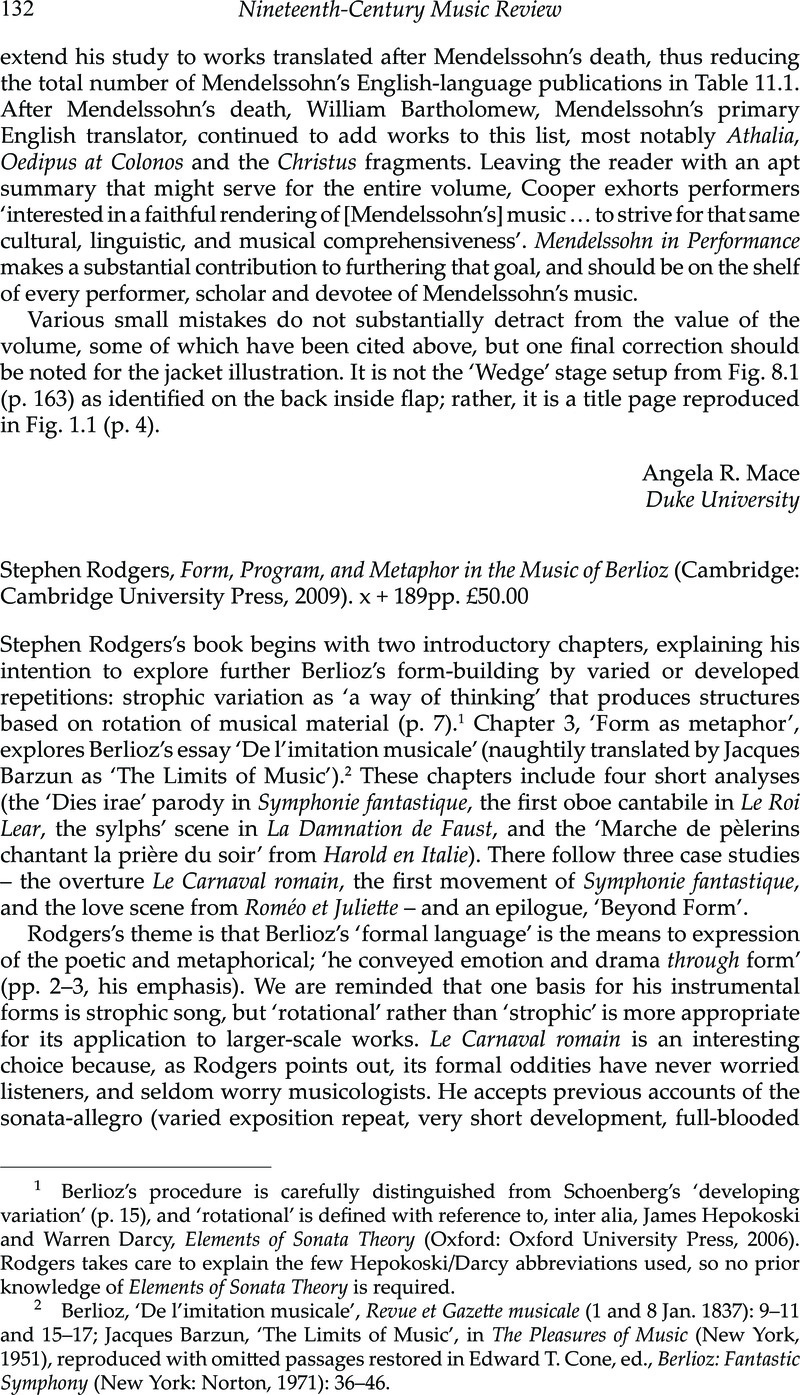No CrossRef data available.
Published online by Cambridge University Press: 13 April 2011

1 Berlioz's procedure is carefully distinguished from Schoenberg's ‘developing variation’ (p. 15), and ‘rotational’ is defined with reference to, inter alia, Hepokoski, James and Darcy, Warren, Elements of Sonata Theory (Oxford: Oxford University Press, 2006).CrossRefGoogle Scholar Rodgers takes care to explain the few Hepokoski/Darcy abbreviations used, so no prior knowledge of Elements of Sonata Theory is required.
2 Berlioz, , ‘De l'imitation musicale’, Revue et Gazette musicale (1 and 8 Jan. 1837): 9–11 and 15–17Google Scholar; Barzun, Jacques, ‘The Limits of Music’, in The Pleasures of Music (New York, 1951),Google Scholar reproduced with omitted passages restored in Cone, Edward T., ed., Berlioz: Fantastic Symphony (New York: Norton, 1971): 36–46Google Scholar.
3 Brittan, Francesca, ‘Berlioz and the Pathological Fantastic: Melancholy, Monomania, and Romantic Autobiography’, 19th-Century Music 29/3 (2006): 211–36.CrossRefGoogle Scholar
4 A spiral interpretation of Berlioz is not new; Ballif, Claude (Berlioz (Paris: Editions Du Seuil, Collection Solfeges, 1968, p.): 85)Google Scholar offers one for Le Corsaire, represented algebraically, and compared to the Game of Goose. Rodgers's approach has greater sophistication, but I remain unconvinced about the need for such pretty diagrams (see my The Musical Language of Berlioz. Cambridge: Cambridge University Press, 1983, p. 273, n. 87).Google Scholar
5 See Berlioz, , Symphonie fantastique (ed. NiTemperley, cholas), New Berlioz Edition Vol. 16 (Kassel: Bärenreiter, 1972), p. 211,Google Scholar where the oboe solo is relegated to ‘Changes of Detail’.
6 Cone's, Edward T. essay ‘Inside the Saint's Head’ appeared serially in the Musical Newsletter (1971–1772),Google Scholar and was reprinted in the Berlioz Society Bulletin (1975) and in Cone, , Music: A View from Delft (Chicago: Chicago University Press, 1989): 217–48Google Scholar.